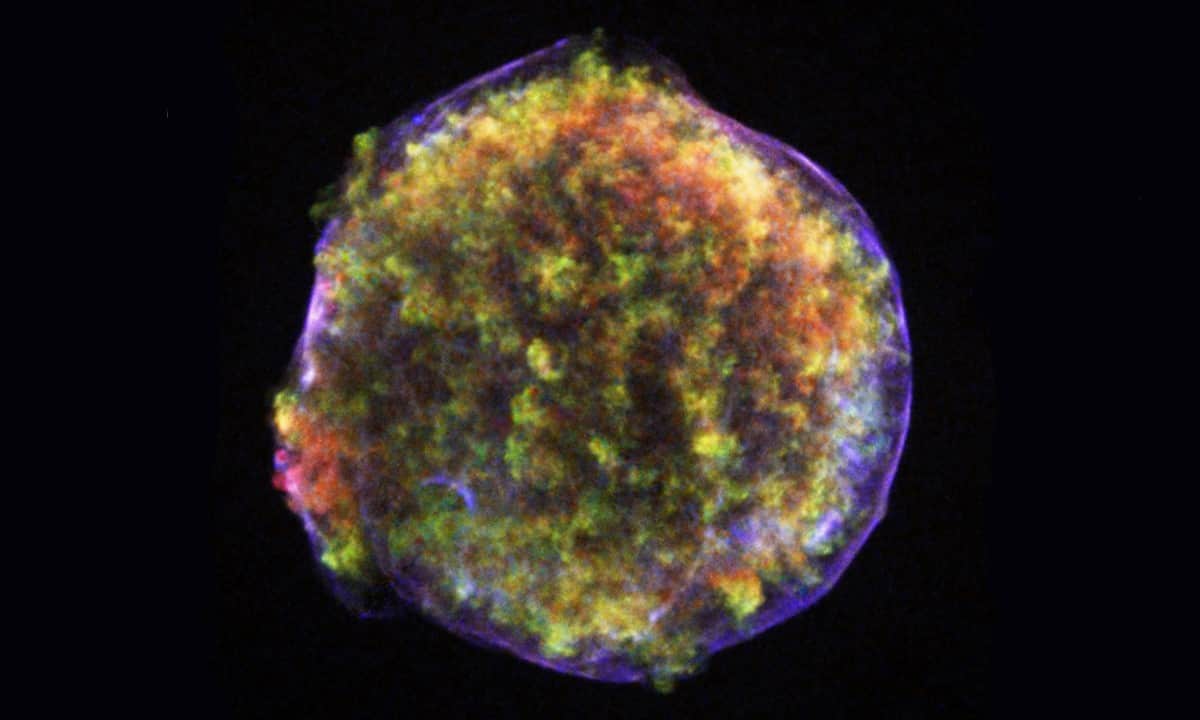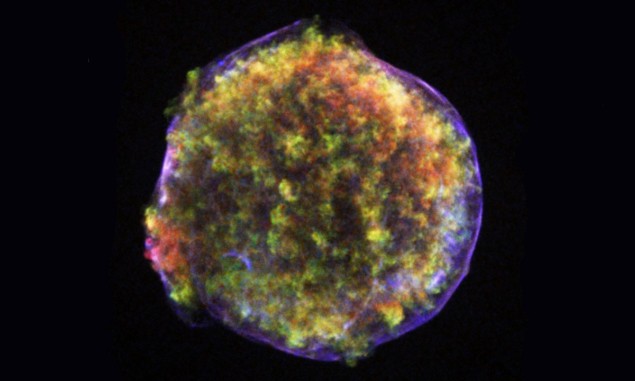PBHs are hypothetical black holes that are about as massive as an asteroid and are believed to be left over from the universe’s earliest moments. PBHs are also candidates for dark matter, so the model provides a potential link between SNe Ia observations and dark matter.
The research was done by Heinrich Steigerwald at the Centre for Astrophysics and Cosmology of the Federal University of Espírito Santo, Brazil, and Emilio Tejeda at the Institute of Physics and Mathematics, Universidad Michoacana de San Nicolás de Hidalgo, Mexico.
White dwarfs are dense stars at the end of their lifetimes that no longer undergo nuclear fusion. If a white dwarf accretes material from a companion star, its mass will increase until it reaches the Chandrasekhar limit — about 1.4 solar masses. At this point fusion switches on in a runaway process that causes a spectacular SNe Ia explosion. The merger of two white dwarfs can also result in a type Ia supernovae and astrophysicists have discovered that “sub-Chandrasekhar” white dwarfs below 1.4 solar masses can ignite as well.
Mystery ignition
Although SNe Ia are routinely observed – and used to measure distances in the universe – astrophysicists do not understand exactly how the explosions are ignited.
“We know that white dwarfs exist, and current models describe them in a satisfactory manner. We also know that SNe Ia arise from the explosion of white dwarfs, though what causes [the explosion] remains a mystery,” Steigerwald tells Physics World. “We have absolutely no idea if these asteroid mass PBHs exist yet, but if they do then our study argues that they are the reason for SNe Ia explosions.”
A PBH with a mass of about 1020 kg would be about one micron in size. If such an object were to encounter a white dwarf, Steigerwald and Tejeda say that it would be accelerated by the gravitational influence of the star to around one-twentieth of the speed of light. At such an incredible speed, Steigerwald says the black hole would cut through the white dwarf like a bullet through butter – which could lead to the detonation of the star.
Their model predicts that ignition takes place within a tiny region no larger than a square millimetre in the wake of the PBH as it passes through the white dwarf. “The rest is well-known physics,” Steigerwald explains. “Once ignited, the white dwarf star explodes within a few seconds. Most of the carbon and oxygen is fused to heavier elements, some of which are radioactive.”
If the mechanism suggested by the team can be verified it could also support the idea that dark matter comprises primordial black holes. This is because the abundance of observed SNe Ia corresponds to the predicted abundance of dark matter.
“Remarkable coincidence”
“Our work has shown that asteroid mass PBHs with a mass of between 10¹⁹–10²³ kg, can ignite SNe Ia from white dwarfs,” he explains. “If the mass of PBHs is about 10²⁰ kg, then fortuitous encounters with white dwarfs can account for both the [observed] rate of SNe Ia – roughly 1 per galaxy per century – and the brightness distribution of these events. “This is quite a remarkable coincidence,” he adds.
Another important aspect of the research is that it provides a mechanism for the ignition of sub-Chandrasekhar white dwarfs – something that had not been known before.

Did a supernova trigger the late Devonian extinction?
“I really like this suggestion and the highly creative out of the box thinking of [Steigerwald and Tejeda],” says Robert Fisher at the University of Massachusetts Dartmouth. He adds that though the model should be treated cautiously, it could help place constraints on primordial black holes.
Steigerwald says that moving the research forward will require two things. One is success in the search for PBHs: “In the next decades, space-based gravitational wave observatories, like the upcoming Laser Interferometer Space Antenna (LISA), could observe the stochastic gravitational-wave background that these primordial black holes would produce during their formation in the early universe”.
He also points out that powerful numerical simulations of the ignition process are required. “The ultimate confirmation of the mechanism to work out or fail would be its demonstration with full reactive numerical simulations in three dimensions. “This is a very difficult task, but I am aware of some [research] groups that I believe have the capacities to do it.”
The research is described in a preprint on arXiv and a paper is expected to be published in Physical Review Letters.

